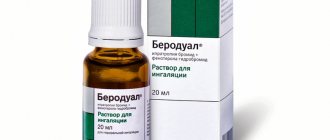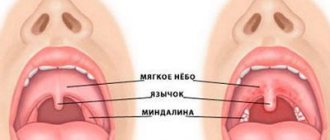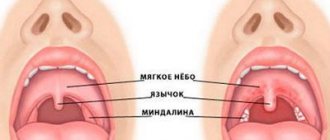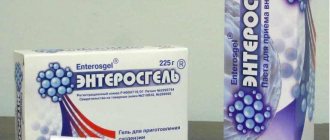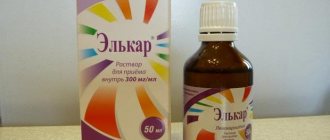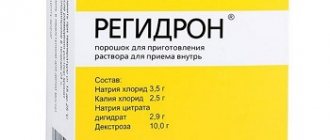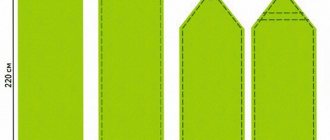Write a review
Reviews: 0
Manufacturers: Ipca Laboratories (India)
Active ingredients
- Albendazole
Disease class
- Giardiasis (giardiasis)
- Other specified protozoal intestinal diseases
- Opisthorchiasis
- Echinococcosis
- Cysticercosis of the central nervous system
- Trichinosis
- Hookworm disease
- Ascariasis
- Strongyloidiasis
- Trichuriasis
- Enterobiasis
- Intestinal helminthiasis of mixed etiology
- Other specified protozoal infections
Clinical and pharmacological group
- Not indicated. See instructions
Pharmacological action
- Antihelmintic (anthelminthic)
Pharmacological group
- Antihelminthics
Nemozole oral suspension
Instructions for medical use of the drug
Description of pharmacological action
Selectively inhibits the polymerization of beta-tubulin, disrupts the activity of the cytoplasmic microtubular system of the cells of the intestinal canal of helminths; changes the course of biochemical processes (suppresses glucose utilization), blocks the movement of secretory granules and other organelles in the muscle cells of roundworms, causing their death. It most effectively affects the larval forms of cestodes - Echinococcus granulosus and Taenia solium, nematodes - Strongyloides stercolatis.
Indications for use
Neurocysticercosis caused by the larval form of the pork tapeworm (Taenia solium); echinococcosis of the liver, lungs, peritoneum, caused by the larval form of the canine tapeworm (Echinococcus granulosus). Nematodes: ascariasis, trichuriasis, hookworm disease, enterobiasis, strongyloidiasis, opisthorchiasis, giardiasis, microsporidiosis. Mixed helminthiases. As an adjuvant in the surgical treatment of echinococcal cysts.
Release form
oral suspension 100 mg/5 ml; plastic bottle (bottle) 20 ml, cardboard pack 1;
Pharmacodynamics
Anthelmintic drug. The main mechanism of action is associated with an inhibitory effect on the polymerization of beta-tubulin, which leads to the destruction of cytoplasmic microtubules of helminth intestinal tract cells; changes the course of biochemical processes (suppresses glucose utilization), blocks the movement of secretory granules and other organelles in the muscle cells of roundworms, causing their death. It is most active against larval forms of cestodes - Echinococcus granulosus and Taenia solium; nematodes - Strongyloides stercolatis.
Pharmacokinetics
Absorption and distribution After oral administration, it is poorly absorbed from the gastrointestinal tract and is not detected in unchanged form in the blood plasma. Bioavailability when taken orally is low, about 30%. Taking simultaneously with fatty foods increases absorption and Cmax by 5 times. Metabolism and excretion Albendazole is quickly biotransformed in the liver into the primary metabolite - albendazole sulfoxide, which also has anthelmintic activity. Cmax of albendazole sulfoxide is achieved in the range from 2 to 5 hours, binding to plasma proteins is 70%. Albendazole sulfoxide is almost completely distributed throughout the body; found in urine, bile, liver, cyst wall and cyst fluid, cerebrospinal fluid. Albendazole sulfoxide is converted in the liver to albendazole sulfone (a secondary metabolite) and other oxidized products. T1/2 of albendazole sulfoxide is 8-12 hours. It is excreted in the form of various metabolites in the urine. Pharmacokinetics in special clinical situations The total clearance of albendazole and its main metabolite does not change with impaired renal function. In patients with impaired liver function, bioavailability increases, Cmax of albendazole sulfoxide increases by 2 times, T1/2 is prolonged. Albendazole is an inducer of microsomal enzymes of the cytochrome P450 system; accelerates the metabolism of many drugs.
Use during pregnancy
The drug is contraindicated for use during pregnancy. If it is necessary to prescribe the drug during lactation, the issue of stopping breastfeeding should be decided. Before prescribing the drug, you should ensure that women of childbearing age are not pregnant. During therapy, reliable methods of contraception should be used.
Contraindications for use
- retinal damage; - pregnancy; - hypersensitivity to the drug and other benzimidazole derivatives. Use with caution in case of hematopoietic disorders or liver dysfunction (liver function should be regularly monitored before and during treatment).
Side effects
From the digestive system: impaired liver function with changes in liver function tests (weak or moderate increase in transaminase activity), abdominal pain, nausea, vomiting. From the hematopoietic system: leukopenia, granulocytopenia, agranulocytosis, thrombocytopenia, pancytopenia. From the central nervous system: headache, dizziness, meningeal symptoms. Dermatological reactions: reversible alopecia, skin rash, itching. Other: fever, increased blood pressure, acute renal failure, allergic reactions.
Directions for use and doses
The average therapeutic dose for the treatment of nematodes for adults and children over 2 years of age is 400 mg once. For neurocysticercosis and echinococcosis, patients weighing 60 kg or more are prescribed the drug at a dose of 400 mg 2 times a day; for patients weighing less than 60 kg, the dose is set at the rate of 15 mg/kg/day, divided into 2 doses. The maximum daily dose is 800 mg. The course of treatment for neurocysticercosis is 8-30 days; for echinococcosis - 3 cycles of 28 days with a 14-day interval between cycles. For giardiasis, children are prescribed the drug at a rate of 10-15 mg/kg 1 time/day for 5-7 days. For toxocariasis in adults and children over 14 years of age weighing more than 60 kg, the drug is used in a single dose of 400 mg; with a body weight of less than 60 kg - 200 mg; for children under 14 years of age, the dose is set at the rate of 10 mg/kg. The frequency of administration is 2 times a day, the duration of therapy is 7-14 days. The drug is taken during meals. It is recommended to treat all family members simultaneously.
Overdose
Treatment: symptomatic, gastric lavage, activated carbon.
Interactions with other drugs
When used together with albendazole, dexamethasone and cimetidine increase the concentration of albendazole sulfoxide in the blood.
Precautions for use
Use with caution in case of liver disorders (before and during treatment, its functions are regularly monitored). Monitoring of blood cellular composition is recommended; If leukopenia occurs, discontinue therapy. In women of childbearing age, a pregnancy test is performed before starting treatment. Reliable contraception is required during therapy. In case of neurocysticercosis with eye damage, before starting treatment, it is necessary to examine the retina (risk of worsening its pathology).
Storage conditions
List B.: In a dry place, protected from light, at a temperature below 25 °C.
Best before date
36 months
ATX classification:
P Antiparasitic drugs, insecticides and repellents
P02 Anthelmintic drugs
P02C Preparations for the treatment of nematodes
P02CA Benzimidazole derivatives
P02CA03 Albendazole
Nemozol suspension for oral administration 100 mg/5 ml 20 ml No. 1
Name
Nemozol.
Release form
Oral suspension
Dosage
100 mg / 5 ml 20 ml. Packing quantity: 1 pc.
Manufacturer
Ipka Laboratories Ltd.
INN
Albendazole.
FTG
Anthelmintic and antiprotozoal agent.
Compound
The oral suspension contains: active substance: albendazole 100 mg in 5 ml excipients: microcrystalline cellulose and carboxymethylcellulose sodium salt, carboxymethylcellulose sodium salt, glycerin, benzoic acid, potassium hydroxide, sorbic acid, polysorbate-80, sorbitol solution, mixed fruit essence , flavoring, ice cream essence, purified water.
Description
Suspension for oral administration White to almost white suspension. Delamination is allowed, which is eliminated by shaking.
Pharmacotherapeutic group
Anthelmintics. Means for the treatment of nematodes. ATX code: P02CA03.
pharmachologic effect
The main mechanism of action of albendazole is its inhibitory effect on beta-tubulin polymerization, which leads to the destruction of cytoplasmic microtubules of helminth intestinal tract cells; changes the course of biochemical processes (suppresses glucose utilization), blocks the movement of secretory granules and other organelles in the muscle cells of intestinal and tissue parasites. Albendazole has larvicidal, ovicidal and anthelmintic effects, causing energy depletion of helminths, which leads to their immobilization and destruction.
Pharmacokinetics
Poorly absorbed (less than 5%) in the gastrointestinal tract, unchanged form is not detected in the blood plasma, because It is quickly converted in the liver into the primary metabolite of albendazole sulfoxide, which also has anthelmintic activity. The systemic pharmacological effect of albendazole is enhanced when taken with fatty foods, which increases absorption by approximately 5 times. Absorption of albendazole sulfoxide is achieved after 2-5 hours. It is 70% bound to plasma proteins and widely distributed throughout the body; found in urine, bile, liver, cyst wall and cyst fluid, cerebrospinal fluid. Albendazole sulfoxide is converted in the liver to albendazole sulfone (a secondary metabolite) and other oxidized products. T1/2 of albendazole sulfoxide 8-12 hours. Excreted in urine. Renal excretion of albendazole and its main metabolite, albendazole sulfoxide, is insignificant; clearance does not change in patients with impaired renal function. Against the background of liver damage, bioavailability increases and Cmax of albendazole sulfoxide increases 2 times, T1/2 lengthens. Albendazole is an inducer of microsomal enzymes of the cytochrome P-450 system; accelerates the metabolism of many drugs. Pharmacokinetics in special patient groups - Extrahepatic cholestasis: Since the elimination of albendazole sulfoxide is reduced, the patient should be closely monitored. - Elderly patients: Clinical pharmacokinetic studies of albendazole sulfoxide in elderly patients have not been conducted, but data obtained from the treatment of 26 patients (age <79 years) with hydatid cysts suggest that the pharmacokinetics in this age group of patients are similar to those in young healthy volunteers. - Use in renal failure: The pharmacokinetics of albendazole in patients with renal failure have not been studied. - Use in liver failure: the pharmacokinetics of albendazole in patients with liver failure have not been studied. — Features of pharmacokinetics in children: clinical studies of the safety of albendazole in children aged 6-13 years were conducted. Albendazole was administered once to patients with echinococcosis (three children on an empty stomach and two after meals) in doses of 200 to 300 mg (at a rate of about 10 mg/kg). However, no differences were identified in the pharmacokinetics of albendazole compared to adult patients. Clinical experience with albendazole in children under 6 years of age is limited. At the same time, no data were found indicating the presence of peculiarities in the tolerability of the drug in patients of this age group who suffered from echinococcosis. There are data from five clinical studies that included 1-year-old children with neurocysticercosis. The development of significant adverse effects of albendazole was not observed. At the same time, the effectiveness of albendazole was similar to that in adult patients.
Indications for use
Intestinal helminthiasis, including mixed helminthic infestations caused by the following helminths and parasites: Nematodes: Ascaris lumbricoides (roundworm), Trichuris trichiura (whipworm), Enterobius vermicularis (pinworm), Ankylostoma duodenale (hookworm), Necator americanus (nematode), Strongyloides stercoralis (intestinal eel), hookworms that cause larval (larval) helminthiasis (skin form). Trematodes: Clonorchis sinensis (Chinese fluke), Opisthorchis viverrini (squirrel fluke). Cestodes: Taenia solium (pork tapeworm), Taenia saginata (bovine tapeworm), Hymenolepis papa (dwarf tapeworm), if they occur in combination with nematodes. If the infection occurs exclusively with tapeworms or other cestodes, then Nemozol should not be used. Protozoa: Giardia lamblia (intestinal or duodenal). Systemic helminthiases: Albendazole demonstrates the greatest effectiveness in the treatment of cysts of the liver, lungs and peritoneum. Experience with cysts of the bones, heart and central nervous system is limited. cystic echinococcosis (caused by Echinococcus granulosus). Albendazole is used to treat patients with cystic echinococcosis. if surgery is not suitable; before surgery; after surgery if preoperative treatment was too short-lived, if cyst contents leaked, or if viable material was identified during surgery; after percutaneous drainage of cysts for diagnostic or therapeutic purposes. alveolar echinococcosis (caused by Echinococcus multilocularis) Albendazole is used to treat patients with alveolar echinococcosis: in case of inoperable disease, especially in cases of local or distant metastases; after palliative surgery; after radical surgery or liver transplantation. neurocystecircosis caused by the larval form of the pork tapeworm (Taenia solium). Albendazole is used to treat patients with the following conditions: single or multiple cysts or granulomatous lesions of the brain parenchyma; arachnoid or intraventricular cysts; grape-shaped cysts. capillariasis caused by Capillaria philippinensis. Gnathostomiasis caused by Gnathostoma spinigerum. trichinosis (caused by Trichinella spiralis and T. pseudospiralis). toxocariasis (caused by Toxocara canis and other related species)
Contraindications
Hypersensitivity to the active substance or any of the auxiliary components, other benzimidazole derivatives. Albendazole should not be used during pregnancy or in women who suspect pregnancy. Women of childbearing potential should be advised to take effective contraception, including non-hormonal contraceptives, during treatment and for one month after completion of treatment.
Directions for use and doses
The drug is taken orally during meals. It is recommended to treat all family members simultaneously. The usual dosage for adults and children over 2 years of age (> 10 kg) for the treatment of the following helminthic infestations: Nematodes, including ascariasis, trichuriasis, enterobiasis, hookworm, necatoriasis - 400 mg of albendazole (1 tablet or 20 ml of suspension) orally once. Strongyloidiasis - 400 mg albendazole (1 tablet or 20 ml suspension) orally for 3 days. Note: The recommended dosage applies only to intestinal parasites and strongyloidiasis. The dosage may not be suitable for the treatment of patients with weakened immune systems and severe damage to internal organs. See "Special Dosage Instructions." Mixed helminthiasis (intestinal nematodes in combination with flat tapeworms) Taenia solium (pork tapeworm), Taenia saginata (bovine tapeworm) - 400 mg of albendazole (1 tablet or 20 ml suspension) orally for 3 days Hymenolepis papa (dwarf tapeworm) - 400 mg albendazole (1 tablet or 20 ml suspension) orally for 3 days, repeat the course after 2-3 weeks Trematodes caused by Clonorchis sinensis (Chinese fluke), Opisthorchis viverrini (squirrel fluke) orally 400 mg albendazole (1 tablet or 20 ml suspension ) 2 times a day for 3 days. Giardiasis (in children 2-12 years old): 400 mg of albendazole orally (1 tablet or 20 ml of suspension) for 5 days. Dosage for children 1-2 years old: half the standard dose. Use only suspension. Dosage for children over 2 years of age but weighing less than 10 kg: half the standard dose. Use only suspension. Duration of treatment See Usual Dosage. If no improvement is observed after 3 weeks: repeat treatment. Systemic helminth infections: To date, there is limited experience with the use of albendazole in high doses in children under six years of age, so use in children under six years of age is not recommended for treatment. The dosage depends on the causative parasite, the patient’s body weight, as well as the severity of the infection: Infection The patient’s body weight Dose Duration of treatment and frequency of dosing per day Cystic echinococcosis > 60 kg 800 mg in two separate doses of 400 mg Daily for 28 days. The 28-day course of therapy can be repeated after 14 days, during which the drug is not prescribed; a total of three such treatment cycles can be carried out 60 kg 60 kg 60 kg 800 mg in two equal separate doses Treatment is usually carried out from seven (minimum) to 28 days 60 kg 60 kg
Special dosage instructions
Elderly: Data on the use of the drug in patients over 65 years of age are insufficient. Anecdotal reports indicate that dosage restrictions are not required. However, elderly patients with impaired liver function should use Nemozol with caution. Use in renal failure: Since the excretion of albendazole and the original metabolite albendazole sulfoxide through the kidneys is negligible, no dosage adjustment is necessary. However, patients with renal failure require monitoring. Use in liver failure: Since albendazole is rapidly metabolized through the liver into the pharmacologically important metabolite albendazole sulfoxide, reduced liver function affects the pharmacokinetics of albendazole sulfoxide. Patients with elevated transaminase levels require monitoring of liver enzyme levels before starting treatment. Treatment with albendazole should be discontinued as soon as liver enzyme levels begin to deteriorate or if a clinically significant decrease in blood cells is observed (see Warnings and Precautions and Side Effects). Correct method of administration Young children should be treated with a suspension. The suspension (with fruit flavor) is taken undiluted or mixed with a drink. The bottle must be shaken well before use. If you accidentally miss the time of taking the drug, the next dose should be taken at the first opportunity. If the time for the next dose of the drug is approaching, the next dose should be taken according to the schedule, without increasing the total dose.
Side effects
Data from large clinical trials and post-marketing experience were used to determine the incidence of side effects. Frequency determination: very common: ≥ 10%; often: ≥ 1% and 400 mg/day) and increased duration of treatment (> 10 days), additional cases of increased intracranial pressure, neck stiffness, acute renal failure, leukopenia, pancytopenia, aplastic anemia, agranulocytosis, very often increased liver function enzymes, hepatitis, reversible alopecia and fever. Patients with liver disease, including hepatic echinococcosis, are more susceptible to bone marrow depression (see Dosage/Administration and Precautions). If the listed adverse reactions occur, as well as if other adverse reactions not described in these instructions occur, you should consult a doctor.
Interaction with other drugs
With simultaneous use of praziquantel, cimetidine or dexamethasone in the blood plasma, the concentration of the active metabolite albendazole (sulfoxide) may increase several times, which may increase the frequency of side effects. Grapefruit juice also increases blood levels of albendazole sulfoxide. Ritonavir, phenytoin, carbamazepine, phenobarbital, levamisole, ritonavir may reduce the concentration of active metabolites of albendazole in blood plasma. The clinical significance of this effect is unknown; but the effectiveness of Nemozol may decrease, in particular, with systemic helminthic infestations. In this case, the effectiveness of treatment should be monitored. Under certain circumstances, alternative dosages or treatments are necessary. Due to possible changes in the activity of cytochrome P-450, there is theoretically a risk of interaction with oral contraceptives, anticoagulants, hypoglycemic agents, theophylline. In all cases, caution should be exercised.
Precautionary measures
Nemozol suspension contains: benzoic acid, which may irritate the skin, eyes and mucous membranes. Benzoic acid may increase the risk of jaundice in newborns. In this age group (
Pregnancy and breastfeeding period
Animal studies have shown adverse effects on the fetus. Currently, there is insufficient data on the use of Nemozol in pregnant women. The drug is contraindicated in pregnant women (see “Contraindications”). If it is necessary to use the drug, women of reproductive age should use effective methods of contraception (see “Precautions”). Breastfeeding: No studies have been conducted in breastfeeding women. There is no data on whether albendazole or its metabolites are excreted in breast milk. Therefore, Nemozol can be used during breastfeeding only if the expected benefit to the mother outweighs the potential risk to the child.
Impact on the ability to drive vehicles and operate machinery
Dizziness may occur when taking albendazole. Patients should be warned about the need to take special care when driving vehicles and while working with potentially dangerous mechanisms.
Overdose
Treatment: symptomatic, gastric lavage, activated carbon.
Package
Oral suspension 100 mg / 5 ml, 20 ml each in a white plastic bottle with a screw-on aluminum cap with a gasket and tamper evident.
Best before date
Suspension for oral administration - 3 years.
Storage conditions
Store in a place protected from moisture and light at a temperature below 25°C. Keep away from children.
Vacation conditions
By doctor's prescription.
Buy Nemozol suspension d/pr. orally 100mg/5ml in vial. 20ml per pack. No. 1 in pharmacy
Price for Nemozol suspension d/pr. orally 100mg/5ml in vial. 20ml per pack. No. 1
Instructions for use for Nemozol Susp d/pr. orally 100mg/5ml in vial. 20ml per pack. No. 1
Similar drugs:
- Vormil Chewable tablets
- Pyrantel Oral suspension
- Decaris Oral tablets
- Helmintox Oral suspension
- Wormin Oral tablets
- Vermox Oral tablets
- Biltricide Oral tablets
- Mebendazole Oral tablets
- Piperazine Tablets
- Pyrantel Pamoate Substance-powder
** The Drug Directory is intended for informational purposes only. For more complete information, please refer to the manufacturer's instructions. Do not self-medicate; Before starting to use the drug Nemozol, you should consult a doctor. EUROLAB is not responsible for the consequences caused by the use of information posted on the portal. Any information on the site does not replace medical advice and cannot serve as a guarantee of the positive effect of the drug.
Are you interested in the drug Nemozol? Do you want to know more detailed information or do you need a doctor's examination? Or do you need an inspection? You can make an appointment with a doctor - the Euro lab is always at your service! The best doctors will examine you, advise you, provide the necessary assistance and make a diagnosis. You can also call a doctor at home . Euro lab clinic is open for you around the clock.
** Attention! The information presented in this medication guide is intended for medical professionals and should not be used as a basis for self-medication. The description of the drug Nemozol is provided for informational purposes and is not intended for prescribing treatment without the participation of a doctor. Patients need to consult a specialist!
If you are interested in any other drugs and medications, their descriptions and instructions for use, information about the composition and form of release, indications for use and side effects, methods of use, prices and reviews of drugs, or you have any other questions and suggestions - write to us, we will definitely try to help you.
